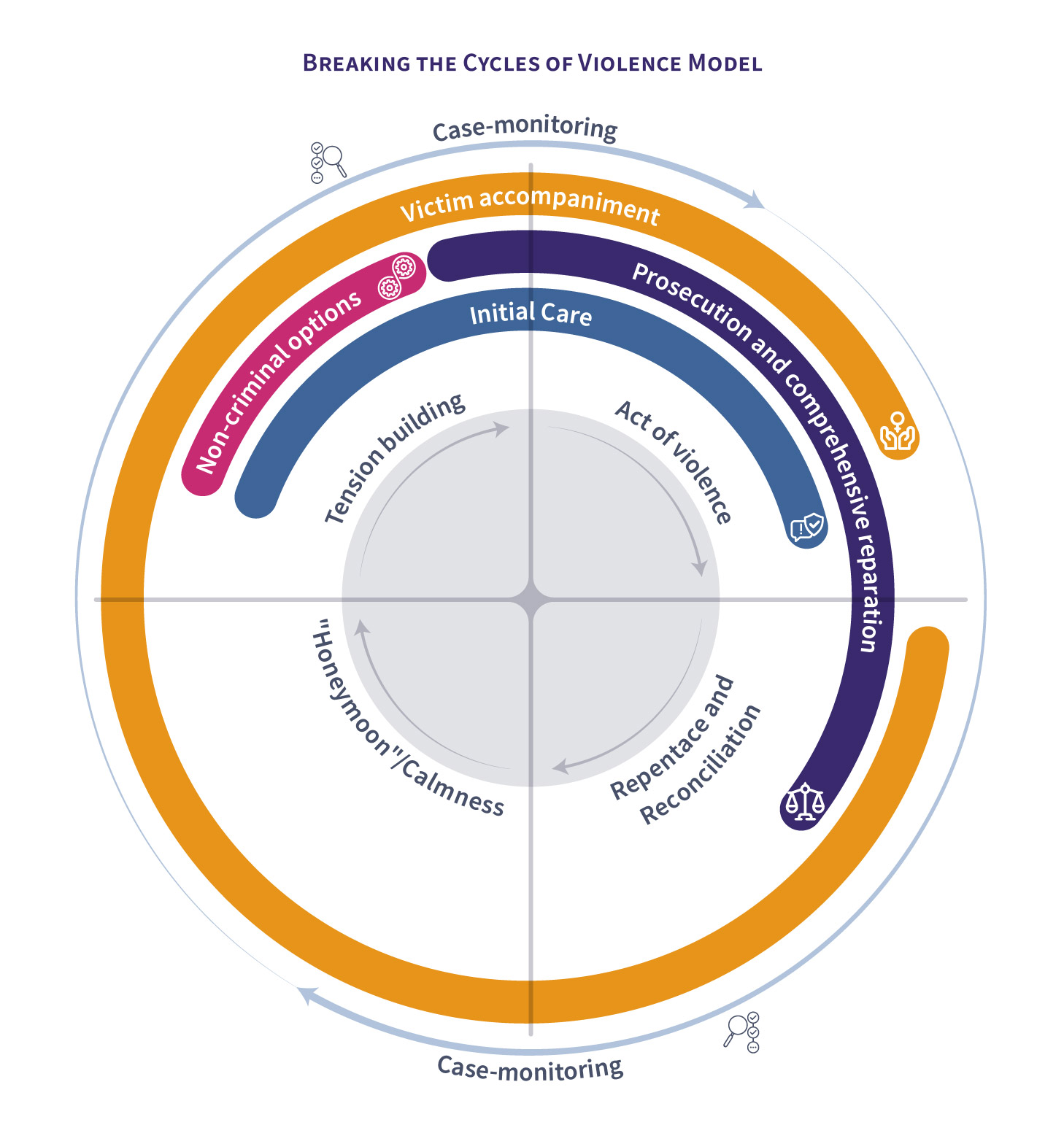In Mexico, more than 70% of women over the age of 15 have experienced violence, yet fewer than 11% report it (ENDIREH, INEGI, 2021). Despite strong legal frameworks, institutional responses remain fragmented and ineffective. Victims are often re-victimized, protocols are inconsistently applied, and coordination between institutions is weak or nonexistent. These gaps prevent justice and reinforce cycles of violence.
Fundación IDEA has developed a systemic, victim-centered model to transform how public institutions respond to violence against women. The model works with police forces, prosecutors’ offices, courts, and Women’s Justice Centers to improve prevention, investigation, and coordinated attention. It is based on five core elements: institutional diagnostics, participatory co-design of practical tools, agile prototyping, a gender and intersectional lens, and formal adoption by public agencies. The model is implemented using existing resources and structures, ensuring its long-term sustainability.

Source: Fundación IDEA’s Rompiendo Ciclos, Construyendo Inicios.
This approach has been deployed mainly through two strategic initiatives: Ni Un Feminicidio Más (2018-2025) – financed by the United States Agency for International Development (USAID) – focused on improving responses to femicide and domestic violence in the states of Nuevo León and Oaxaca; and ROCCI – Rompiendo Ciclos, Construyendo Inicios (2024-2025) – funded by the Bureau of International Narcotics and Law Enforcement Affairs (INL/México) – aimed to pilot a replicable model to interrupt cycles of partner violence in Coahuila, Nuevo León, and the State of Mexico.
As part of these initiatives, Fundación IDEA co-developed more than 120 tools and products to improve institutional practices. These tools include risk assessment formats, domestic violence protocols, victim interview guides, judicial sentencing frameworks, and case-tracking systems. Each tool is co-created with frontline staff, tested through iterative feedback loops, and designed for everyday use. Graphic design plays a critical role in enhancing usability and accessibility, enabling officials to quickly identify essential elements and integrate them into their workflow.
The model has delivered tangible results. In Nuevo León, police protocol compliance rose from 46% to 83%, and femicide response simulations demonstrated 75% effectiveness. Prosecutorial practices improved, with femicide conviction rates rising from 63.6% to 80%. In total, more than 28,000 women have accessed improved services, and over 1,599 police officers have been trained. In the judiciary, 594 judges and court personnel were trained on gender-sensitive sentencing and risk analysis. In Women’s Justice Centers, 215 cases were assessed with risk tools, and user-informed improvements were implemented. Coordination also improved: a pilot monitoring system tracked compliance in 77% of interinstitutional cases.
This model proves that institutional transformation is possible when centered on victims’ needs and built through collaborative, agile design. It promotes human dignity, strengthens justice systems, and is already being scaled across Mexican states. The model directly contributes to the Sustainable Development Goals, particularly SDG 5 (Gender Equality) and SDG 16 (Peace, Justice, and Strong Institutions).
EN FUNDACIÓN IDEA NOS DEDICAMOS A GENERAR INFORMACIÓN Y A DISEÑAR POLÍTICAS QUE INFLUYAN POSITIVAMENTE EN EL FUTURO.